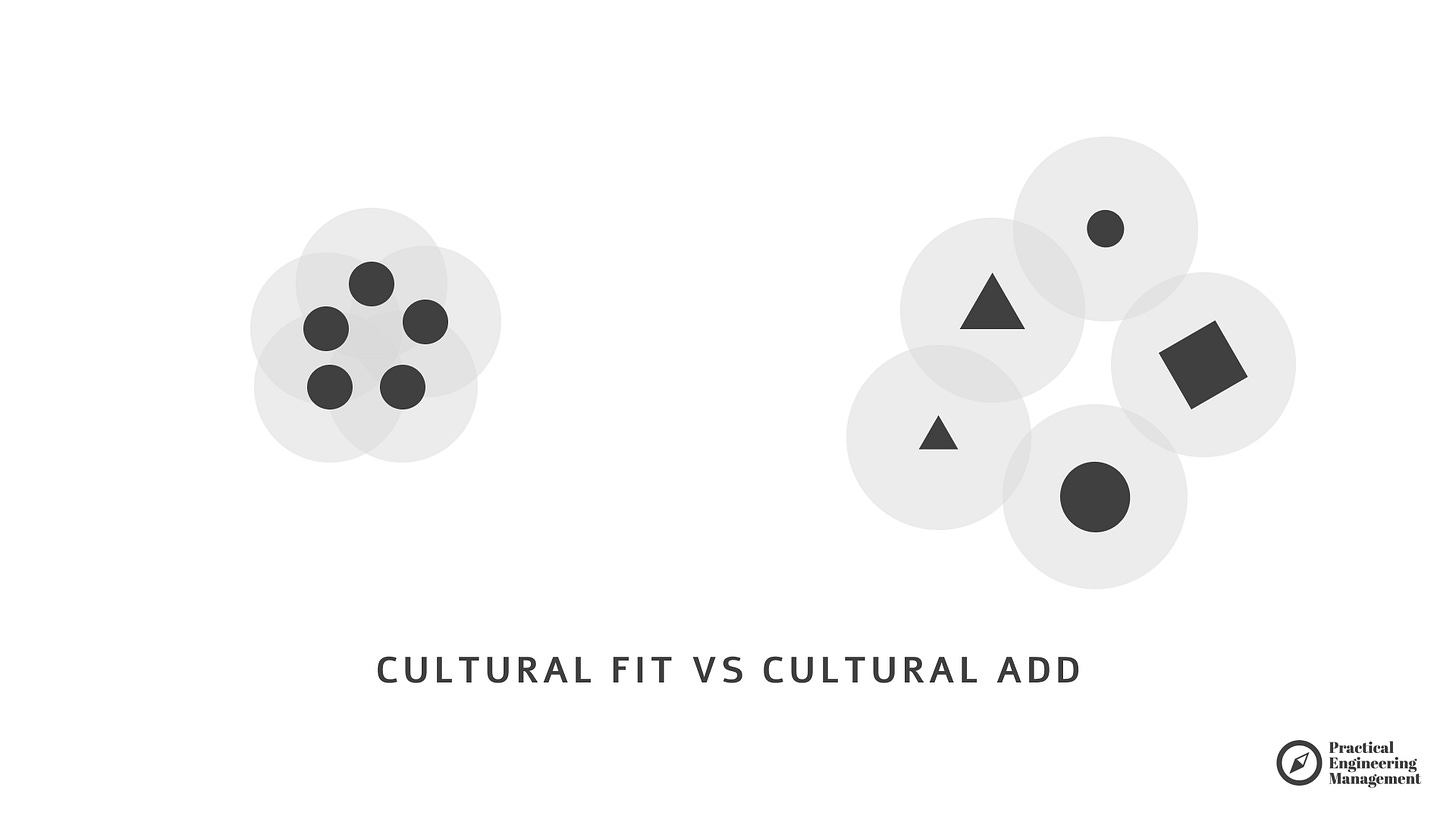"Cultural-Fit" Can Harm Your Team
Seek Diversity, Not Sameness
In the previous article, I reviewed several frameworks for archetypes and personality classification, such as CliftonStrengths, True Colors, and Jungian Archetypes.
Although no single label can capture the full complexity of a human being, those tools helped me understand the group’s dynamics and identify potential gaps to address when expanding the team's headcount. But this is just the beginning of the work involved in building a diverse and high-performing team.
Today, we will continue this subject from a slightly different angle. I invite you to explore why the concept of “cultural fit” checks can damage your team and organization.
Here, you can find a PDF cheat sheet summarizing this article.
Hiring
The hiring process, from writing the job specs to sourcing to meeting candidates and onboarding them, is both the most critical and the most demanding task for new engineering leaders (this subject deserves a dedicated article, which I will publish in the future).
If you work for a large or well-established organization, it’s not that bad. Most likely, you have some processes in place—hiring scripts, a list of questions to ask, or colleagues who have already done recruiting and can onboard you into this work.
In younger companies, most of that falls on you (Team Leader, Engineering Manager, or sometimes Tech Leader). This was my experience at a startup world - the rule was simple: if you grow the team, you own the hiring process.
Competence vs Personality
When you start hiring, the default is often this: you hire for a specific skill set, ideally with experience in your domain. You look for people who work in Java, know some design patterns, and are fluent with The Twelve-Factor App and SOLID principles. Spring, databases, and building REST APIs are nice additions. And if the person has worked in your industry—Fintech, Edtech, Entertainment—they're already a perfect candidate.
Over time, you realize you need something more. Agile, Teamwork, Passion—these keywords often define the core of a company’s culture (in my distant past, “no one party like us” was one such value 😉).
With that in mind, you discover the concept of “cultural fit,” which assesses how well a candidate suits the company’s style and culture.
Cultural-Fit – Are They Like Us?
In practice, a “cultural fit” check often becomes the single driver of a soft-skills interview. Without proper training, such sessions tend to follow our instinct to surround ourselves with people like us (a personal bias). This bias can lead to hiring candidates with similar backgrounds, experiences, or personalities rather than focusing on competence and character.
The entire article and PDF/Notion/doc templates are available only for paid subscribers. You can use the training budget (here’s a slide for your HR).
Thanks for supporting Practical Engineering Management!




